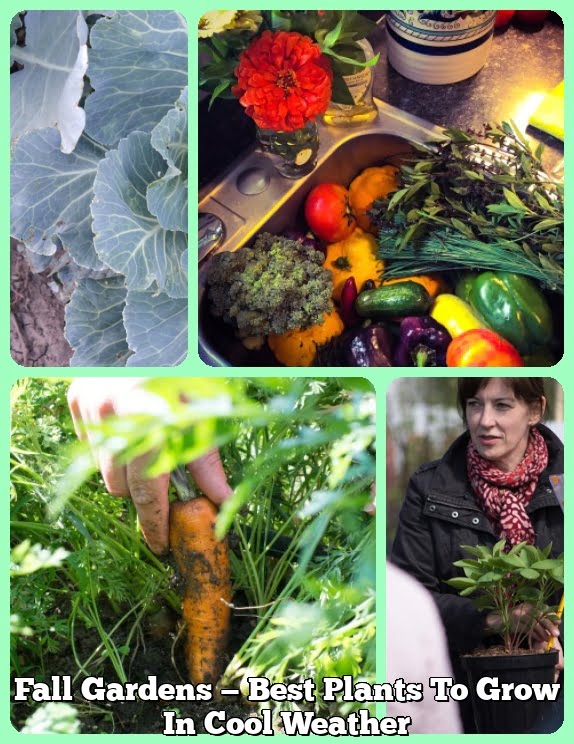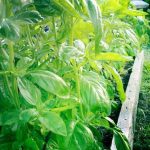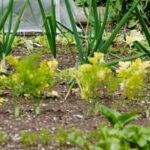Cool weather vegetable gardens have a unique charm and offer numerous benefits for both experienced gardeners and beginners alike. With their vibrant colors, crisp textures, and robust flavors, cool weather vegetables bring a refreshing change to our plates during the cooler months.
In this article, we will explore the wonders of cool weather vegetable gardening – from choosing the right location to troubleshooting common issues – and provide you with all the information you need to create a thriving garden of your own.
One of the greatest advantages of cool weather vegetable gardening is its ability to extend the growing season. While many other plants struggle in colder temperatures, certain crops actually thrive in these conditions.
From leafy greens like kale, spinach, and lettuce to root vegetables like carrots, beets, and radishes, cool weather vegetables can offer a bountiful harvest even as winter approaches. Whether you live in a region with mild winters or experience freezing temperatures for several months, there are plenty of options for filling your plate with freshly grown produce throughout the year.
In addition to their productivity during cooler seasons, cool weather vegetable gardens also provide aesthetic beauty to outdoor spaces. The varied shades of green foliage highlighted by pops of vibrant reds, purples, and yellows create visually pleasing landscapes that enhance any garden.
The ability to grow an array of colorful vegetables even as other plants enter into dormancy adds interest and life to winter gardens. Furthermore, by incorporating different designs and layouts within your cool weather vegetable garden, you can transform it into an eye-catching focal point that complements your overall outdoor space.
In the following sections of this article, we will delve deeper into topics such as choosing the right location for your cool weather vegetable garden and identifying essential crops that thrive in lower temperatures. We will also discuss steps to prepare soil health for optimal growth and share tips on planting techniques to maximize yield.
From nurturing your crops throughout the year to harvesting and storage practices, we will cover all aspects of cool weather vegetable gardening. So, grab your gardening tools and get ready to embark on a rewarding journey into the world of cool weather vegetable gardens.
Choosing the Right Location
When it comes to cool weather vegetable gardening, choosing the right location is crucial for the success of your garden. Here are some factors to consider when selecting a spot for your garden:
- Sunlight: Most cool weather vegetables thrive in full sun, which means they need at least 6-8 hours of direct sunlight each day. Look for a location that receives ample sunlight throughout the day, especially during the cooler months.
- Drainage: Good drainage is essential for cool weather vegetables as they don’t do well in waterlogged soil. Avoid areas with poor drainage or where water tends to pool after rain. If necessary, consider amending the soil or creating raised beds to improve drainage.
- Wind: While some cool weather vegetables can tolerate light winds, strong gusts can damage delicate plants or cause them to dry out quickly. Choose a location that is sheltered from strong winds, such as near a fence or building.
- Proximity to water source: Regular watering is crucial for healthy vegetable growth, so it’s important to have easy access to a water source. Choosing a location near an outdoor faucet or irrigation system will make it more convenient for watering your garden.
- Accessibility and convenience: Consider how easily you can access your garden from your house and other areas of your property. A location close to your kitchen will make it more convenient when harvesting fresh vegetables for meals.
| Factors | Considerations |
|---|---|
| Sunlight | At least 6-8 hours of direct sunlight each day |
| Drainage | Avoid areas with poor drainage or waterlogging |
| Wind | Choose a sheltered location to protect delicate plants |
| Proximity to water source | Ensure easy access for regular watering |
| Accessibility and convenience | Select a location close to your kitchen for easy harvesting |
As you can see, choosing the right location is vital for cool weather vegetable gardening. By considering factors such as sunlight, drainage, wind, proximity to a water source, and accessibility, you will be well on your way to creating a successful and bountiful cool weather vegetable garden.
Essential Cool Weather Vegetables
Cool weather vegetable gardens offer a wide range of options when it comes to choosing the right crops. These vegetables thrive in lower temperatures and can withstand frost, making them ideal for gardening during the cooler months. Here is a comprehensive guide to some essential cool weather vegetables that you can grow in your garden.
- Leafy Greens: Leafy greens like spinach, kale, lettuce, and Swiss chard are excellent choices for cool weather gardens. They are packed with nutrients and can be harvested multiple times throughout the season. These vegetables grow best in temperatures ranging from 40°F to 70°F (4°C to 21°C).
- Root Vegetables: Root vegetables such as carrots, radishes, turnips, and beets are well-suited for cool weather gardening. Their flavors are enhanced by the colder temperatures, resulting in sweeter and more flavorful harvests. These vegetables prefer temperatures between 40°F and 75°F (4°C to 24°C) for optimal growth.
- Brassicas: Brassicas include a variety of vegetables like cabbage, broccoli, cauliflower, Brussels sprouts, and kohlrabi. These crops thrive in cooler temperatures and are known for their ability to withstand frost. They require full sun and prefer temperatures ranging from 55°F to 75°F (13°C to 24°C) for healthy growth.
To ensure successful cultivation of these cool weather vegetables, it’s important to keep in mind that most of them prefer well-drained soil with a pH level around neutral (6.0-7.0). Additionally, incorporating organic matter into the soil such as compost or well-rotted manure can greatly improve soil fertility.
Preparing the Soil
Preparing the soil is a crucial step in creating a successful cool weather vegetable garden. By taking the time to properly prep and enhance the soil, you can create an optimal growing environment for your crops and maximize their growth potential. Here are some important steps to consider when preparing your soil for cool weather vegetables.
Firstly, it’s essential to test the pH level of your soil. Most cool weather vegetables prefer a slightly acidic pH level, ideally between 6.0 and 7.0. You can easily find DIY soil testing kits at your local garden center or send a sample to a lab for more detailed results. Based on the pH level of your soil, you can adjust it by adding amendments like lime to raise the pH, or sulfur to lower it.
Next, it’s important to add organic matter to your soil. Organic matter, such as compost or well-aged manure, helps improve both drainage and moisture retention in the soil. It also provides essential nutrients that promote healthy plant growth. Spread a layer of organic matter across the garden bed and work it into the top few inches of soil using a garden fork or tiller.
In addition to organic matter, it’s beneficial to incorporate fertilizer into the soil before planting your cool weather vegetables. Choose an all-purpose fertilizer with balanced levels of nitrogen, phosphorus, and potassium (N-P-K). Follow package instructions for proper application rates based on the size of your garden bed or consult with a local gardening expert for specific recommendations. Fertilizing prior to planting will ensure that your crops have access to key nutrients throughout their growing season.
By following these steps to prepare and enhance your soil, you’ll provide your cool weather vegetables with an ideal foundation for growth and development. Taking the time and effort now will pay off with healthier plants, higher yields, and more delicious harvests in the future.
Planting and Sowing
Planting and sowing cool weather vegetables properly is essential for maximizing yield in your garden. With the right techniques, you can ensure that your plants grow strong and healthy, resulting in a bountiful harvest. Here are some tips to help you get started:
- Start with the Right Seeds: Choose high-quality seeds that are specifically suited for cool weather conditions. Look for varieties that have been bred to thrive in lower temperatures and have shorter growing seasons. This will give your plants the best chance of success.
- Timing is Key: Cool weather vegetables should be planted during the appropriate time of year to take advantage of the cooler temperatures. Pay attention to your local climate and frost dates to determine when to plant each crop. Some vegetables, like lettuce and spinach, can be planted as soon as soil can be worked in early spring, while others, like broccoli and cauliflower, may need to wait until later in the season.
- Soil Preparation: Before planting, it’s important to prepare your soil for optimal growing conditions. Cool weather vegetables prefer well-draining soil rich in organic matter. Amend your soil with compost or well-rotted manure to improve its fertility and structure. Remove any weeds or debris from the area before planting.
- Spacing Guidelines: Proper spacing between plants is crucial for good air circulation and healthy growth. Follow the spacing guidelines provided on seed packets or plant tags to give each plant enough room to mature without crowding each other.
- Watering and Fertilizing: Cool weather vegetables generally require consistent moisture throughout their growing season, so watering regularly is important. However, avoid overwatering as this can lead to disease issues. Consider using a soaker hose or drip irrigation system to provide water directly to the roots without wetting the foliage excessively.
- Regularly monitor moisture levels by checking the top few inches of soil; if it feels dry, it’s time to water.
- Fertilize your plants with a balanced, slow-release fertilizer to provide them with the necessary nutrients. Follow the package instructions for application rates and timing.
By following these planting and sowing tips, you can set your cool weather vegetables up for success from the start. Remember to monitor your garden regularly, provide proper care, and adjust as needed throughout the growing season. With patience and diligence, you’ll be rewarded with a thriving garden full of delicious cool weather vegetables.
Seasonal Care
Spring Care
As the weather starts to warm up and the days get longer, it’s important to take some specific actions to care for your cool weather vegetable garden in the spring. One key task is to clear out any debris or dead plants from the winter months. This will help prevent pests and diseases from taking hold in your garden. Additionally, it’s a good time to apply a layer of compost or organic fertilizer to replenish the soil nutrients.
Another important aspect of spring care is monitoring and controlling weeds. Weeds can compete with your vegetables for resources such as sunlight, water, and nutrients. Regularly weeding your garden beds will help keep your vegetables healthy and maximize their productivity. Consider using organic mulch such as straw or wood chips to suppress weeds and retain moisture in the soil.
Summer Care
During the hot summer months, cool weather vegetables may struggle due to high temperatures. To protect them, it’s crucial to provide adequate shade and irrigation. Consider installing shade cloth or placing tall plants around your cool weather crops to shield them from direct sunlight during the hottest parts of the day.
Watering is also essential during summer care. Cool weather vegetables generally require consistent moisture but avoid over-watering as it can lead to fungal diseases such as root rot. Use a soaker hose or drip irrigation system that delivers water directly to the roots without wetting the foliage excessively.
Don’t forget about pest control in the summertime. Common garden pests like aphids, caterpillars, and snails can wreak havoc on your cool weather vegetable garden. Regularly inspect plants for signs of infestation, such as chewed leaves or sticky residue left by sap-sucking insects. Utilize organic pest control methods such as handpicking pests or applying homemade sprays made from neem oil or garlic.
Fall/Winter Care
As the weather starts to cool down again, it’s important to prepare your cool weather vegetables for the upcoming frost and winter conditions. To extend the growing season, consider using row covers or cold frames to provide additional insulation and protection against freezing temperatures.
Fall is also a great time to apply a layer of organic mulch around your plants to help regulate soil temperature and conserve moisture. Mulching will also prevent weed growth during the winter months when weeds tend to grow more slowly.
Monitoring and adjusting watering practices is crucial during fall and winter care. As the temperature drops, plants require less water. Be sure to adjust your irrigation schedule accordingly to avoid over-watering.
By following these seasonal care tips, you can provide optimal conditions for your cool weather vegetable garden throughout the year, ensuring healthy plants and bountiful harvests.
Harvesting and Storage
Harvesting Cool Weather Vegetables
When it comes to harvesting cool weather vegetables, timing is everything. The best time to harvest these crops is when they have reached their peak maturity but before the temperatures drop below freezing. This will ensure that you are able to enjoy the freshest and most flavorful produce from your garden.
One important tip for harvesting cool weather vegetables is to use a sharp knife or pruners to carefully cut the vegetables from the plant. Pulling or twisting them off can damage the plants and reduce overall yield. It’s also essential to harvest in the early morning when temperatures are cooler, as this helps preserve the flavor and texture of the vegetables.
Different cool weather vegetables require different harvesting methods. Lettuce, for example, can be harvested by cutting individual leaves from the outer part of the plant or by cutting the entire head at once. Root crops like carrots and radishes should be gently pulled out of the ground, taking care not to break or damage them.
Storing Cool Weather Vegetables
Proper storage is key to maximizing the longevity of your cool weather vegetable harvest. Before storing, it’s important to clean your vegetables by removing any dirt or debris. However, be careful not to wash them until just before use as excess moisture can lead to spoilage.
Some cool weather vegetables can be stored without refrigeration, while others require specific conditions for optimal storage. Root crops such as carrots, turnips, and beets do well when stored in a cool, dark place like a cellar or garage where temperatures range from 32°F (0°C) to 40°F (4°C) with high humidity levels.
Leafy greens like spinach and kale can be stored in a plastic bag or container in the refrigerator. Be sure to remove any damaged leaves before storing them and avoid washing until you are ready to use them.
Peas and beans should be stored in a cool, dry place in a well-ventilated container. It’s important to check for any signs of molding or spoilage regularly to ensure they are still fresh.
By following these best practices for harvesting and storing your cool weather vegetables, you can enjoy the rewards of your garden for an extended period of time, even after the temperatures drop.
Troubleshooting and Pest Control
Cool Weather Vegetable Gardens can be a rewarding and productive way to grow fresh, nutritious produce throughout the year. However, like any type of gardening, there are common issues and pests that can hinder your success. In this section, we will explore how to identify and prevent these problems in your cool weather vegetable garden.
One common issue in cool weather vegetable gardens is soil compaction. Compacted soil can restrict root growth and ultimately stunt the growth of your vegetables. To prevent soil compaction, it is important to avoid walking on the beds where you are growing your vegetables. Instead, create pathways between beds for easier access.
Another problem that is often encountered in cool weather vegetable gardens is nutrient deficiencies. Cool weather crops have specific nutritional requirements, and if those needs are not met, the plants may become weak or stunted. Regularly testing the soil and amending it with organic matter or fertilizers specific to cool weather crops can help prevent nutrient deficiencies.
In addition to these common issues, pests can also be a challenge in maintaining a healthy cool weather vegetable garden. Some pests that commonly affect cool weather vegetables include aphids, slugs, snails, and caterpillars. To prevent pest infestations, it is important to practice good sanitation by removing dead plant material and weeds from your garden regularly. Additionally, companion planting certain flowers or herbs that repel pests can help deter them from your cool weather vegetable garden.
By being proactive in identifying and preventing common issues such as soil compaction, nutrient deficiencies, and pest infestations in your cool weather vegetable garden, you can ensure a thriving and bountiful harvest all season long.
| Common Issue/ Pest | Prevention Measures |
|---|---|
| Soil Compaction | Avoid walking on beds; create pathways |
| Nutrient Deficiencies | Regularly test soil; amend with organic matter or appropriate fertilizers |
| Pests (aphids, slugs, snails, caterpillars) | Practice good sanitation; remove dead plant material and weeds regularly. Companion planting with pest-repellent flowers/herbs. |
Inspiring Designs and Layouts
Cool weather vegetable gardens not only offer the opportunity to cultivate fresh and nutritious produce, but they also present a canvas for creativity with their designs and layouts. Planning and arranging your cool weather vegetable garden in an aesthetically pleasing manner can enhance its visual appeal while efficiently utilizing space. Here are some inspiring ideas for designing and organizing your cool weather vegetable garden.
One popular design concept for cool weather vegetable gardens is the raised bed garden. Raised beds provide several benefits such as better drainage, improved soil quality, and easier maintenance. They also create defined boundaries within your garden, giving it structure and organization. Consider constructing raised beds with various materials like wood or stone to add a visual element to your vegetable garden.
Another creative approach is companion planting, which involves grouping plants that benefit each other when planted together. For instance, planting leafy greens like lettuce or spinach alongside taller plants such as broccoli or cabbage provides shade and protection from harsh sunlight. This type of interplanting not only maximizes space but also supports natural pest control and nutrient sharing.
Vertical gardening is another design strategy that is particularly useful for those with limited space or small gardens. Utilizing trellises, cages, or stakes allows you to grow vining vegetables like peas, beans, or cucumbers vertically instead of horizontally across the ground. This method makes efficient use of space while adding height and dimension to your cool weather vegetable garden.
In addition to these design ideas, consider incorporating aesthetics into your cool weather vegetable garden by using decorative elements such as pathways made from gravel or stepping stones, colorful plant labels or signs, or even utilizing recycled containers as unique planters. These creative touches can turn your garden into a visually appealing focal point in your outdoor space.
By implementing innovative designs and layouts in your cool weather vegetable garden, you can create an inviting and attractive area that combines functionality with aesthetic appeal. Experimenting with different arrangements not only adds beauty but also enhances the overall gardening experience. So, let your imagination soar and enjoy the process of designing your own unique cool weather vegetable garden.
Conclusion
In conclusion, cool weather vegetable gardening offers a wide range of benefits and rewards for those who are willing to dive into this world. From the beauty of lush green vegetables thriving in lower temperatures to the satisfaction of cultivating and harvesting your own crops, there is much to enjoy in this type of gardening.
By choosing the right location and preparing the soil properly, you can create an optimal environment for cool weather vegetables to grow and flourish. With a variety of essential cool weather vegetables available, such as kale, lettuce, broccoli, and carrots, you can create a diverse and nutritious garden that provides fresh produce throughout the cooler months.
Proper planting techniques and seasonal care are crucial for maximizing yield and maintaining the health of your garden. Nurturing your plants with regular watering, protection from pests, and fertilizer will ensure their growth. Additionally, knowing when and how to harvest your cool weather vegetables will help preserve their freshness and longevity.
While it is important to be aware of common issues like pest control and troubleshoot them promptly, it should not discourage you from diving into cool weather vegetable gardening. By adopting creative designs and layouts in your garden arrangement, you can add visual interest while maximizing space efficiency.
So don’t hesitate any longer. Take the plunge into the world of cool weather vegetable gardening today. With dedication, patience, and these helpful tips at hand, you will surely enjoy the bountiful rewards that come with growing your own delicious and healthy vegetables in cooler climates. Happy gardening.
Frequently Asked Questions
What vegetables grow best in cool weather?
Some vegetables thrive in cool weather conditions and are well-suited to be grown during colder seasons. Examples of these vegetables include leafy greens like lettuce, spinach, and kale.
Cruciferous vegetables such as broccoli, Brussels sprouts, and cabbage also tend to do well in cooler temperatures. Additionally, root vegetables like carrots, beets, and radishes can withstand cooler weather and continue to grow steadily.
What temperature is too cold for vegetable garden?
The temperature at which a vegetable garden becomes too cold largely depends on the specific types of plants being grown. Generally, most common vegetable plants prefer temperatures ranging from 60 to 80 degrees Fahrenheit (15-27 degrees Celsius) for optimal growth and productivity.
However, if the temperature drops consistently below 50 degrees Fahrenheit (10 degrees Celsius), many warm-season crops may begin to struggle or even die off. In some cases, certain hardier varieties might survive slightly lower temperatures if they are protected by covering or other methods of insulating the plants.
Will vegetables grow in 60 degree weather?
Vegetables can indeed grow in 60-degree weather but their growth rate may be affected compared to warmer conditions. Ideally, most vegetables experience optimal growth between 60-80 degrees Fahrenheit (15-27 degrees Celsius).
While this temperature range is suitable for a variety of crops including leafy greens and root vegetables, it may not be favorable for warm-season plants like tomatoes or peppers that typically prefer warmer environments around 70-85°F (21-29°C). Growth rate in cooler weather tends to slow down due to reduced metabolic activity in the plant, but with proper care and attention, it is still possible to have successful vegetable yields at this temperature range.

If you’re looking to get into vegetable gardening, or are just looking for some tips on how to make your current garden better, then you’ve come to the right place! My name is Ethel and I have been gardening for years. In this blog, I’m going to share with you some of my best tips on how to create a successful vegetable garden.





